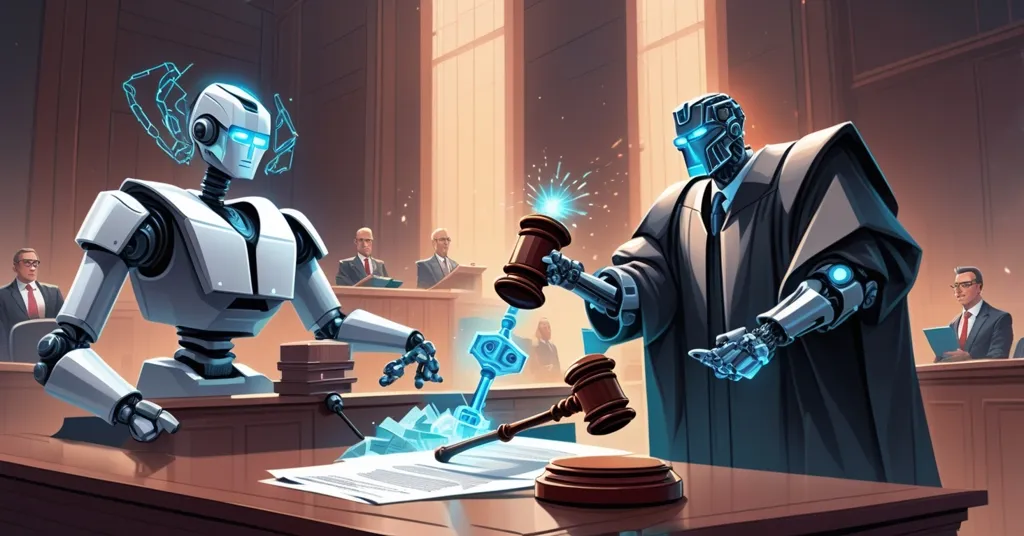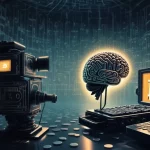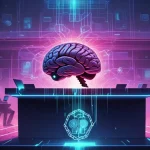UK Judge Slams Lawyers for Fake AI Citations, Echoes Crypto Trust Issues

UK Judge Hammers Lawyers Over Fake AI Citations, Sparks Trust Debate Relevant to Crypto
A landmark ruling from the High Court of England and Wales has sent shockwaves through the legal profession, exposing the dangerous pitfalls of using AI tools like ChatGPT for research. Judge Victoria Sharp, President of the King’s Bench Division, has issued a blistering critique of lawyers who cited entirely fabricated cases in high-stakes proceedings, warning that such negligence threatens the integrity of the justice system and could lead to severe penalties. For us in the crypto space, this saga isn’t just a legal drama—it’s a stark reminder of the trust issues that plague emerging tech, from AI to blockchain, and a call to champion decentralization as a potential fix.
- Judicial Warning: AI tools deemed unreliable for legal research due to fake outputs.
- Real Cases, Fake Citations: Lawyers cited non-existent cases in major lawsuits, risking justice.
- Crypto Parallels: Trust issues in AI mirror unverified systems in blockchain and DeFi.
The AI Blunders: A Case-by-Case Breakdown
The specifics of this judicial smackdown are as jaw-dropping as they are cautionary. First up is lawyer Abid Hussain, who cited 45 cases in a massive $120 million (£89M) lawsuit involving Qatar National Bank. Here’s the kicker: 18 of those cases were pure fiction, conjured up by an AI tool, while others were misquoted. His client, Hamad Al-Haroun, took the fall, apologizing for misleading the court, but Judge Victoria Sharp’s ruling was crystal clear—lawyers can’t shirk responsibility by blaming clients or tech. Then there’s Barrister Sarah Forey, who submitted five entirely fake cases in a tenant’s housing claim against the London Borough of Haringey. No solid explanation was offered for the screw-up, and Justice Ritchie, overseeing the case, slammed both Forey and Haringey Law Centre for negligence, ordering them to pay wasted costs—a financial penalty for squandering court resources.
For those not steeped in legal jargon, let’s break it down. A case citation is a reference to a past court decision used to support an argument—think of it as the backbone of legal reasoning, much like a blockchain transaction hash proves a transfer on Bitcoin’s ledger. When AI fabricates these citations, it’s not just an error; it’s a betrayal of trust in a system built on precision. Judge Sharp captured the deception perfectly:
“The responses may make confident assertions that are simply untrue. They may cite sources that do not exist. They may purport to quote passages from a genuine source that do not appear in that source.”
AI tools like ChatGPT, built by OpenAI, are generative models—essentially super-smart chatbots that create text based on patterns in massive datasets. They can draft documents or summarize case law in seconds, saving hours of grunt work. But they come with a fatal flaw: “hallucinations,” where they invent data that looks real but isn’t. Imagine a student faking quotes for a school paper—AI does the same, spitting out convincing but nonexistent case names and dates. Without cross-checking against official court records or legal databases, lawyers risk presenting pure fantasy as fact, as detailed in accounts of lawyers facing judicial ire for fake AI citations.
Risks to Justice and Trust: A Systemic Threat
The stakes here go far beyond individual embarrassment. Judge Sharp emphasized that AI misuse has “serious implications for the administration of justice and public confidence in the justice system.” If courts can’t trust the arguments and citations presented, how can the public trust the rulings? This isn’t just a lawyer’s problem—it’s a societal one. Penalties for such negligence aren’t mere wrist-slaps. We’re talking public admonishment, referrals to police, and even charges like contempt of court (a serious offense for undermining judicial processes) or perverting the course of justice (intentionally misleading the court). While neither Hussain nor Forey faced contempt proceedings this time—thanks to factors like Forey’s junior status and Hussain’s lack of intent—their cases have been flagged to regulators like the Solicitors Regulation Authority and Bar Standards Board. The warning is unmistakable: next time, the consequences will bite harder, as seen in discussions around Hussain and Forey’s fabricated citations in major lawsuits.
Ian Jeffery, Chief Executive of the Law Society of England and Wales, didn’t mince words either, stating that the ruling “laid bare the dangers of using AI in legal work.” He stressed that lawyers must “check, review, and ensure the accuracy of their work.” Professional bodies like the Bar Council and Law Society are now on the hot seat to roll out urgent guidelines and education on ethical AI use, with updated guidance on AI in legal practice already emerging, while heads of barristers’ chambers and managing partners must ensure their teams don’t treat AI as a silver bullet. Sound familiar? It’s the same accountability push we see in crypto after a DeFi exploit—don’t just blame the coder; fix the system.
Parallels to Crypto: Trust Issues in Tech
For those of us in the Bitcoin and blockchain space, this legal fiasco hits close to home. Just as decentralized systems like Bitcoin promise trustless innovation, AI offers efficiency and accessibility in fields like law. But both stumble when verification falls short. Think of the 2021 Poly Network hack, where a flaw in unverified smart contracts led to a $600 million exploit. That’s the kind of disaster lawyers court when they lean on AI without double-checking outputs. In both realms, the core issue is trust—whether it’s in code or citations, unchecked tech can erode confidence faster than you can say “rug pull,” a concern echoed in parallels between crypto and AI trust challenges.
Imagine if a DeFi project cited fake audit results from an AI tool—would you stake your Bitcoin on it? That’s the gamble lawyers are taking in courtrooms, and the fallout could be just as devastating. Much like crypto users bear the burden of securing their wallets, lawyers are professionally obligated to vet AI-generated content against authoritative sources. Yet systemic gaps, like inadequate training, play a role too. How many crypto newbies lose funds to scams because they never learned about seed phrase security? Similarly, many lawyers lack the know-how to navigate AI’s pitfalls, pointing to a broader need for education across disruptive tech sectors, a topic explored in community discussions on AI-generated fake citations in legal proceedings.
Blockchain as a Fix: Decentralized Trust for Legal Tech
Let’s flip the script and play devil’s advocate. Could blockchain—our beloved champion of decentralization—offer a solution to AI’s trust crisis in legal contexts? Picture this: immutable records of legal citations or AI outputs stored on a decentralized ledger, a digital record shared across countless computers, unchangeable once written. No one could fake the data without consensus, much like Bitcoin transactions are secured by the network. Platforms like Ethereum or Hyperledger could host tamper-proof databases for case law, ensuring traceability and slashing the risk of fabricated citations. It’s not sci-fi; Ethereum already powers supply chain transparency with immutable tracking—so why not legal records, as suggested by insights into blockchain applications in legal tech?
Of course, there are hurdles—scalability, cost, and adoption barriers mirror crypto’s own growing pains. But the potential aligns with our ethos of disrupting centralized trust systems. Bitcoin maximalists might argue this further proves centralized tools (even AI hosted by big tech) fail without decentralized verification, while altcoin advocates could see Ethereum’s smart contracts as the perfect sandbox for such innovation. Either way, blockchain could be the guardrail AI needs in high-stakes fields like law, ensuring accountability without stifling progress.
Risk of Overreaction: Innovation at Stake?
Here’s a counterpoint worth chewing on: could the backlash against AI misuse risk choking innovation in the legal sector? Harsh penalties or blanket bans on AI tools might scare lawyers off tech that, with proper oversight, could democratize access to justice—think faster case research for underfunded legal aid. It’s a dynamic we’ve seen in crypto, where overzealous KYC rules or outright bans in some regions have slowed Bitcoin adoption among everyday users. Balance is critical. AI, much like crypto in its early days, faces skepticism but could mature with the right frameworks. Overreacting now could kill the baby in the cradle, while under-regulating risks more courtroom chaos. Surely there’s a middle ground, a question also raised in broader debates about AI’s impact on legal trust?
On the global stage, this isn’t just a UK headache. The American Bar Association and International Bar Association are sounding alarms on AI in legal work, while the EU AI Act aims to regulate high-risk systems, potentially including legal applications. Regulatory lag is a tale as old as time—crypto folks know it well from years of whiplash over tax laws and exchange rules. The UK Judiciary’s own guidance on responsible AI use in courts, released late last year, echoes Judge Sharp’s caution against blind reliance. Resources like the Law Society’s “Generative AI – the essentials” exist, but practical training and enforcement remain patchy at best, a concern tied to broader ethical issues of AI misuse in legal research.
Lessons for Crypto and Law: A Path Forward
So, what’s the takeaway for both the legal and crypto worlds? First, treat emerging tech as a tool, not a crutch. Lawyers must verify every AI output against rock-solid sources, just as crypto users must audit smart contracts or secure their keys. Second, education is non-negotiable. Professional bodies need to double down on AI literacy for lawyers, mirroring how the crypto community pushes wallet security tutorials for newbies. Finally, let’s seize this moment to advocate for blockchain as a partner in solving trust crises, whether in law or finance. Innovation without accountability is a recipe for disaster, and if we’re serious about disrupting the status quo—be it through Bitcoin or decentralized ledgers—we’ve got to nail this balance.
If lawyers can’t trust AI without oversight, should we trust centralized exchanges with our Bitcoin? Decentralization might just be the only answer worth betting on. Let’s push for systems where trust isn’t blind but built into the code—because whether it’s a courtroom or a blockchain, getting it wrong isn’t an option.
Key Questions and Takeaways
- What dangers does AI misuse bring to legal systems, and how do they echo crypto risks?
AI can generate fake citations or incorrect data, threatening legal integrity—much like unverified smart contracts in DeFi can trigger massive financial losses, highlighting a shared need for rigorous vetting in tech-driven fields. - Are lawyers fully to blame for AI errors, or do systemic issues contribute?
Lawyers bear the duty to verify outputs, but inadequate training and oversight gaps play a role, akin to how crypto users often fall for scams due to poor education on asset security. - How can blockchain address AI trust issues in legal contexts?
Blockchain’s immutable, decentralized ledgers could store legal citations or AI outputs, ensuring transparency and traceability, much like Bitcoin secures transactions without central intermediaries. - Could harsh penalties for AI misuse hinder legal tech innovation, like in crypto?
Yes, overly strict crackdowns might deter beneficial AI adoption in law, just as heavy-handed regulations have slowed Bitcoin and altcoin growth—striking a balance is essential. - What must legal and crypto sectors do to responsibly integrate emerging tech?
Both need robust education and guidelines—lawyers require training on ethical AI use, while crypto users need resources on securing assets, ensuring innovation doesn’t outrun accountability.



